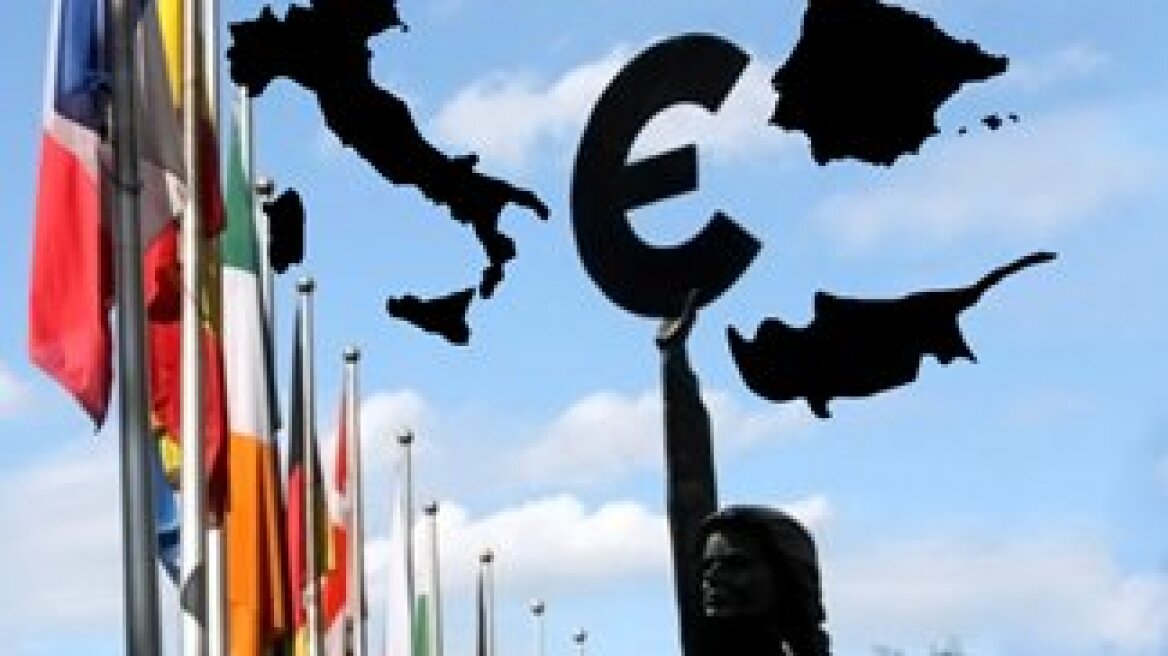
The new fronts of the crisis move to Italy, Spain and Cyprus (?)
The new fronts of the crisis move to Italy, Spain and Cyprus (?)
As quickly as the positive climate in the markets due to the bailout of the Spanish banks deflated, so rapidly did the scenarios for the next day of the eurozone proliferate once again, with many players and now with analysts saying that neither the Spanish problem or the Greek one have been solved, while dark clouds are gathering over Italy too.
UPD:
As quickly as the positive climate in the markets due to the bailout of
the Spanish banks deflated, so rapidly did the scenarios for the next
day of the eurozone proliferate once again, with many players and now
with analysts saying that neither the Spanish problem or the Greek one
have been solved, while dark clouds are gathering over Italy too.
The escalation of the debt crisis in the Eurozone looks as if it is out of the control of the European political leaders, as they have clearly demonstrated quicker reflexes while handling the Spanish crisis in relation to Greece or Portugal, but still have not reached a final and effective solution, rather a rescue scenario on new terms that may leave open fronts with the rest of the memorandum countries that were treated differently from Spain.
The first test of the markets against the handling of the Spanish problem reveals that investors are not convinced. It is indicative that on Monday afternoon, and while the initial enthusiasm for the agreement between Spain and the EU regarding the recapitalization of banks had calmed down, the climate in the bond markets reversed. The Italian and Spanish bonds erased their morning profits and spreads rose again. In fact, the premium required by investors to hold the ten-year Spanish bonds rose by more than 20 basis points, while at the start of the day it was falling even below 500. A similar increase was recorded by the Italian spread too, resulting in the cost of borrowing for the Spaniards still being over 6.5% and for the Italians not exceeding 6%.
Estimates for Italy are rife and many believe the third largest economy of Europe remains in the sights of investors and speculators, even after the rescue of Spain. For argument's sake Bloomberg said on Monday evening that the Italian debt amounts to 2 tril. euros, "the third highest debt for a developed country after Greece and Japan."
Apart from Italy however, Cyprus is also in the market spotlight. The statement made by an EU official on Dow Jones Newswires that "the Eurozone is vigilant about the Cypriot banks and everything is ready for immediate assistance. It is surprising that the cry for help has not sounded yet", is indicative.
All this might compose a nightmarish puzzle, but not only for the peoples and governments of the troubled nations. The pressure is now in the heart of the Eurozone, its so-called hard core.
The escalation of the debt crisis in the Eurozone looks as if it is out of the control of the European political leaders, as they have clearly demonstrated quicker reflexes while handling the Spanish crisis in relation to Greece or Portugal, but still have not reached a final and effective solution, rather a rescue scenario on new terms that may leave open fronts with the rest of the memorandum countries that were treated differently from Spain.
The first test of the markets against the handling of the Spanish problem reveals that investors are not convinced. It is indicative that on Monday afternoon, and while the initial enthusiasm for the agreement between Spain and the EU regarding the recapitalization of banks had calmed down, the climate in the bond markets reversed. The Italian and Spanish bonds erased their morning profits and spreads rose again. In fact, the premium required by investors to hold the ten-year Spanish bonds rose by more than 20 basis points, while at the start of the day it was falling even below 500. A similar increase was recorded by the Italian spread too, resulting in the cost of borrowing for the Spaniards still being over 6.5% and for the Italians not exceeding 6%.
Estimates for Italy are rife and many believe the third largest economy of Europe remains in the sights of investors and speculators, even after the rescue of Spain. For argument's sake Bloomberg said on Monday evening that the Italian debt amounts to 2 tril. euros, "the third highest debt for a developed country after Greece and Japan."
Apart from Italy however, Cyprus is also in the market spotlight. The statement made by an EU official on Dow Jones Newswires that "the Eurozone is vigilant about the Cypriot banks and everything is ready for immediate assistance. It is surprising that the cry for help has not sounded yet", is indicative.
All this might compose a nightmarish puzzle, but not only for the peoples and governments of the troubled nations. The pressure is now in the heart of the Eurozone, its so-called hard core.
The independent European rating agency Egan-Jones confirmed the assessment of Germany on the AA- scale, alone against all the others that have given it the highest rating. It justifies it with the "costs incurred to the German government because of the rescue programs" and even said that the outlook gave a negative image, that is the prospects of the German economy in a period of 3 to 6 months. It concludes by saying that "the consequences of a possible Greek exit have to be monitored", apparently because such a development could trigger a domino effect in Europe.
Which is exactly what Moody’s said on Monday.
Which is exactly what Moody’s said on Monday.
UPD:
Ακολουθήστε το protothema.gr στο Google News και μάθετε πρώτοι όλες τις ειδήσεις
Δείτε όλες τις τελευταίες Ειδήσεις από την Ελλάδα και τον Κόσμο, τη στιγμή που συμβαίνουν, στο Protothema.gr
Δείτε όλες τις τελευταίες Ειδήσεις από την Ελλάδα και τον Κόσμο, τη στιγμή που συμβαίνουν, στο Protothema.gr
ΡΟΗ ΕΙΔΗΣΕΩΝ
Ειδήσεις
Δημοφιλή
Σχολιασμένα








































